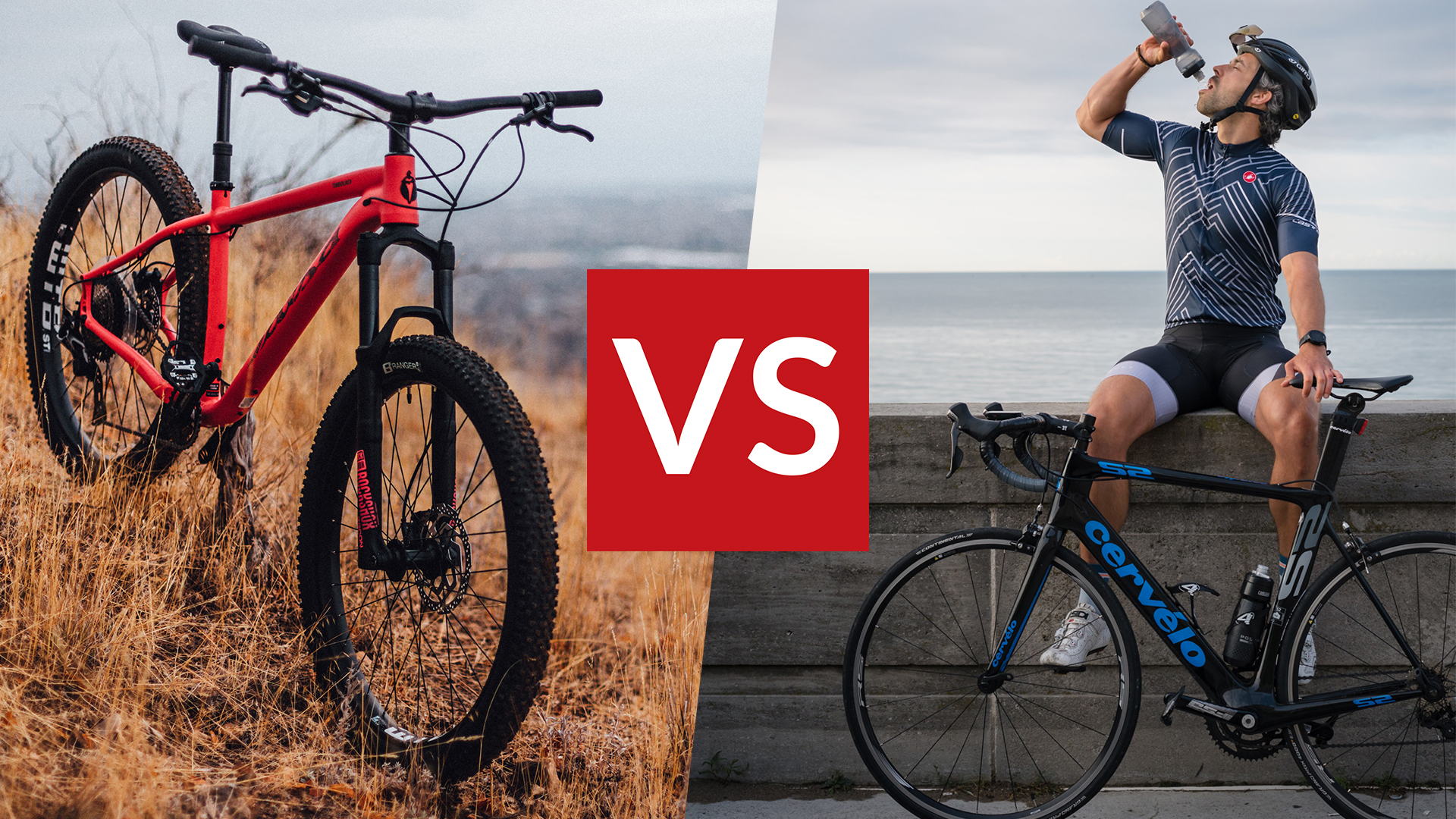

Trying to decide between a mountain bike vs road bike? We're here to help. Bikes have never been so specialised in terms of the terrain they're designed for, so it's essential you make the right choice of steed for where and how you plan to ride.
There are certain essential differences between road and mountain bikes that you need to be aware of, and the new niche of gravel biking has added to the potential pitfalls faced by first-time buyers. Read on for a rundown of the differences between the two bike breeds, and once you've figured out which is the right choice for you, head to our best mountain bike or best road bike guides for some product recommendations.
- Just starting out? Try one of the best mountain bikes under £500
- Need assistance? Here are the best electric bikes around
Mountain bike vs road bike: suspension
A mountain bike can vary from having no suspension to sporting front suspension or being a 'full susser' with both front and rear suspension – the more rugged the terrain you ride the more suspension you're likely to need.
A road bike usually has no suspension; that said, some higher end road bikes may offer a small amount of suspension both front and rear, and the whole thing is further complicated by gravel bikes, which look like beefed up road bikes and are used for riding dirt roads – they may have a limited amount of suspension in, for example, the seat post.
If you plan to ride entirely on road you probably don't really need any suspension; for anything else, it's definitely worth considering having something to soak up the bumps.
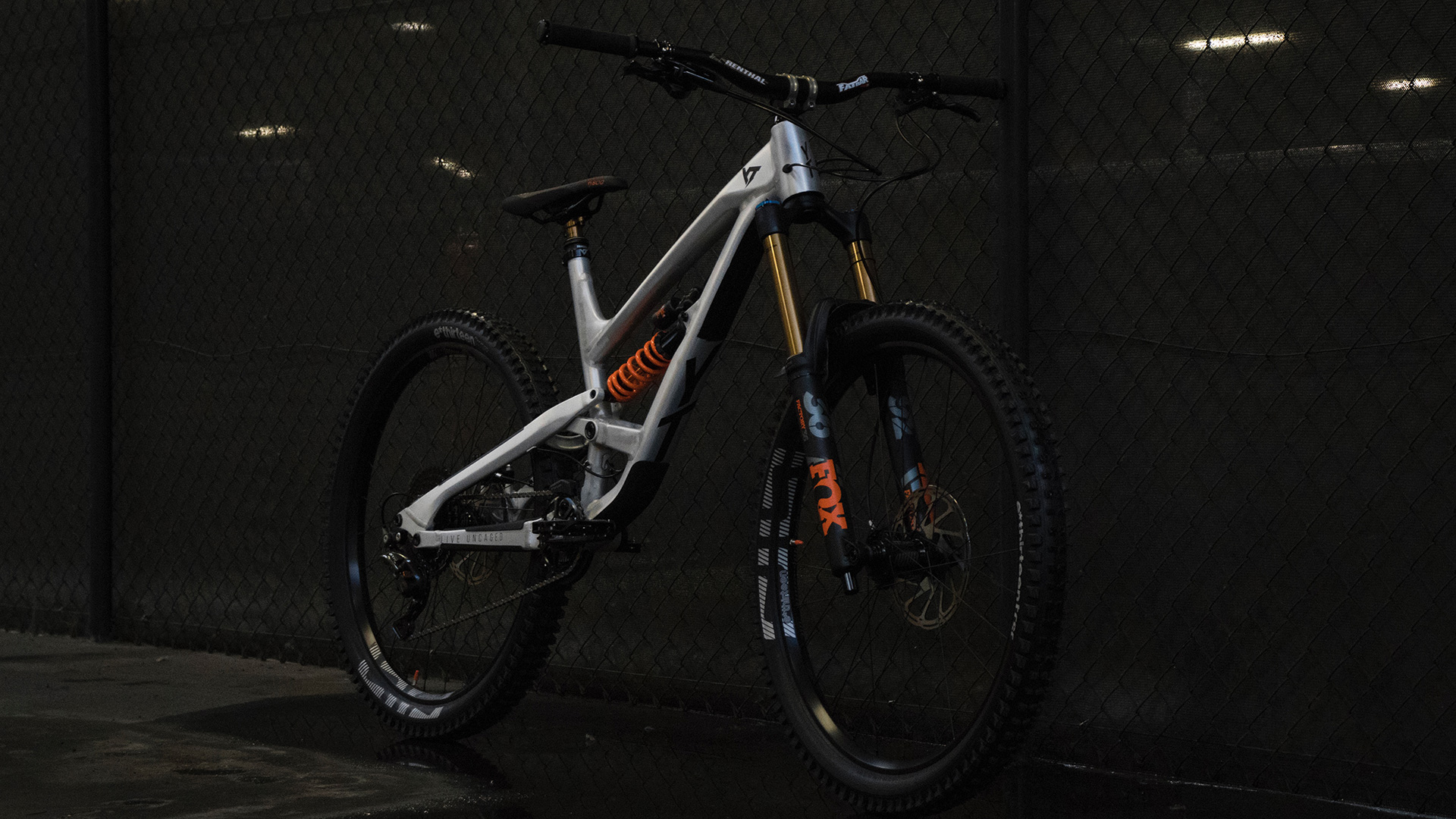
Full suspension mountain bike
Mountain bike vs road bike: frame
Mountain bikes with full suspension have different frame shapes and geometries than road bikes in order to accommodate the rear suspension, otherwise, road, mountain and gravel bikes appear to have pretty much the same frame shape at first glance.
However, subtle variations in the geometry of the frame mean that mountain bikes frames give a more upright riding position for better handling on tricky terrain, whilst road bike frames provide a more 'stretched out' riding position for improved efficiency and aerodynamics.
Sign up to the T3 newsletter for smarter living straight to your inbox
Get all the latest news, reviews, deals and buying guides on gorgeous tech, home and active products from the T3 experts
It's also essential to consider frame size; your local bike shop will be able to measure you up to ensure you have a correctly sized frame – too small or too large and you'll find the bike uncomfortable and unwieldy to ride.
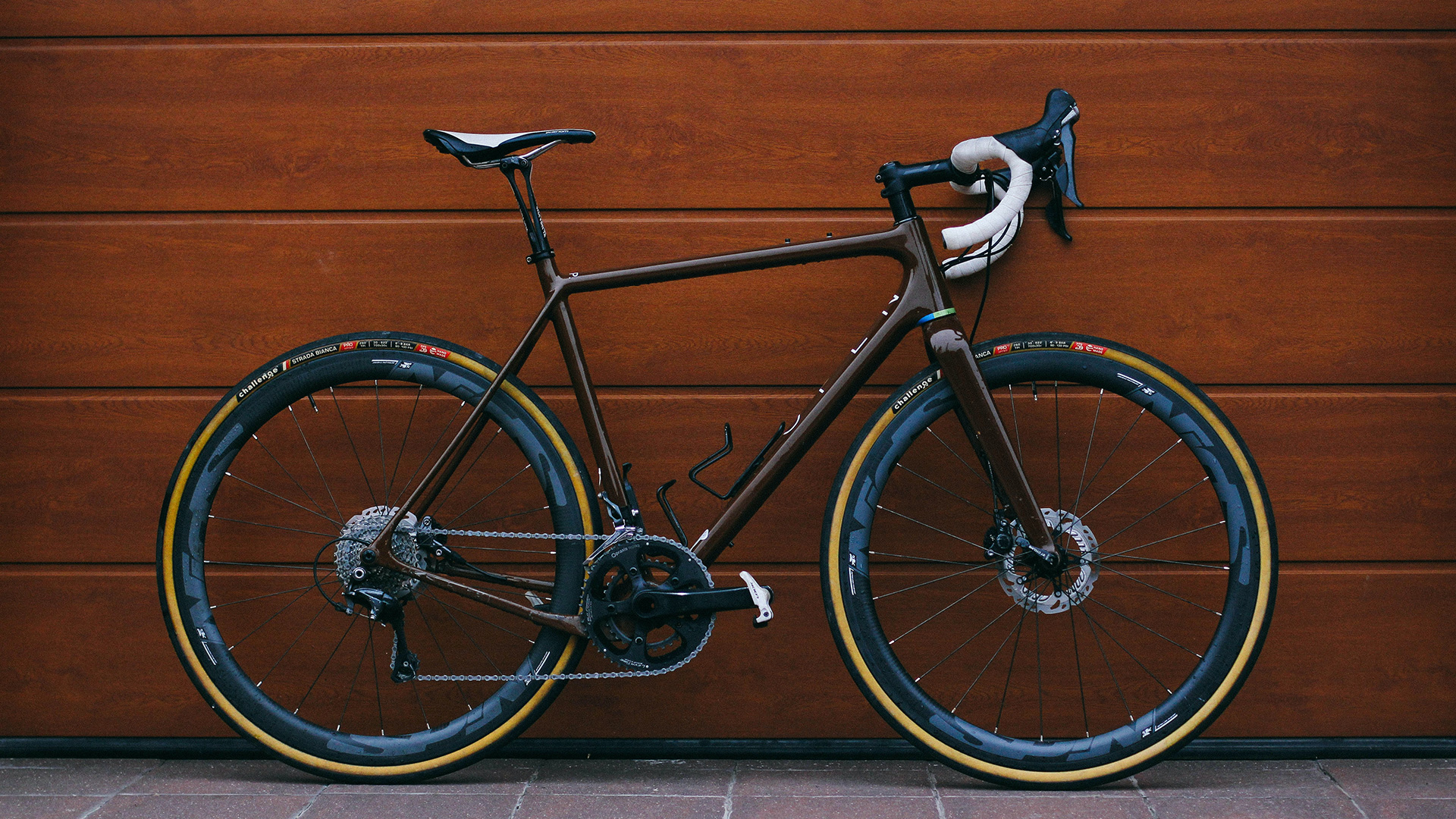
Road bike
Mountain bike vs road bike: handlebars
Flat, wide bars for mountain bikes, narrower drop bars for road bikes is the rule. Flat, wide bars give a more upright and stable riding position, which is better for manoeuvring a bike over rough terrain, whilst drop bars offer a lower and more efficient riding position along with a wider variety of hand and body positions, which helps prevent fatigue on long road rides.
As ever, gravel bikes muddy the waters by offering a choice of flat, drop or 'flared' bars – the latter are drop handlebars with a slight flare in the drop, which gives a wider grip for better handling off-road.
Mountain bike vs road bike: pedals
Road, mountain and gravel bikes may come with either flat or clip-in pedals. 'Flats' will usually have raised pins on the upper surface, which help the soles of your shoes grip when riding on rough terrain; flat pedals on road bikes won't have such aggressively shaped pins as they do on mountain bikes as there's less need for grip.
Clip-in pedals allow cleats attached to the bottom of your cycling shoes to literally 'clip-in' to the pedal, providing a more efficient pedal stroke – but they take a bit of getting used to and you need to have them set up correctly so you can clip in and out quickly and efficiently – it's especially important to master unclipping from the pedals otherwise if you wipe out you'll hit the deck still attached to your bike.
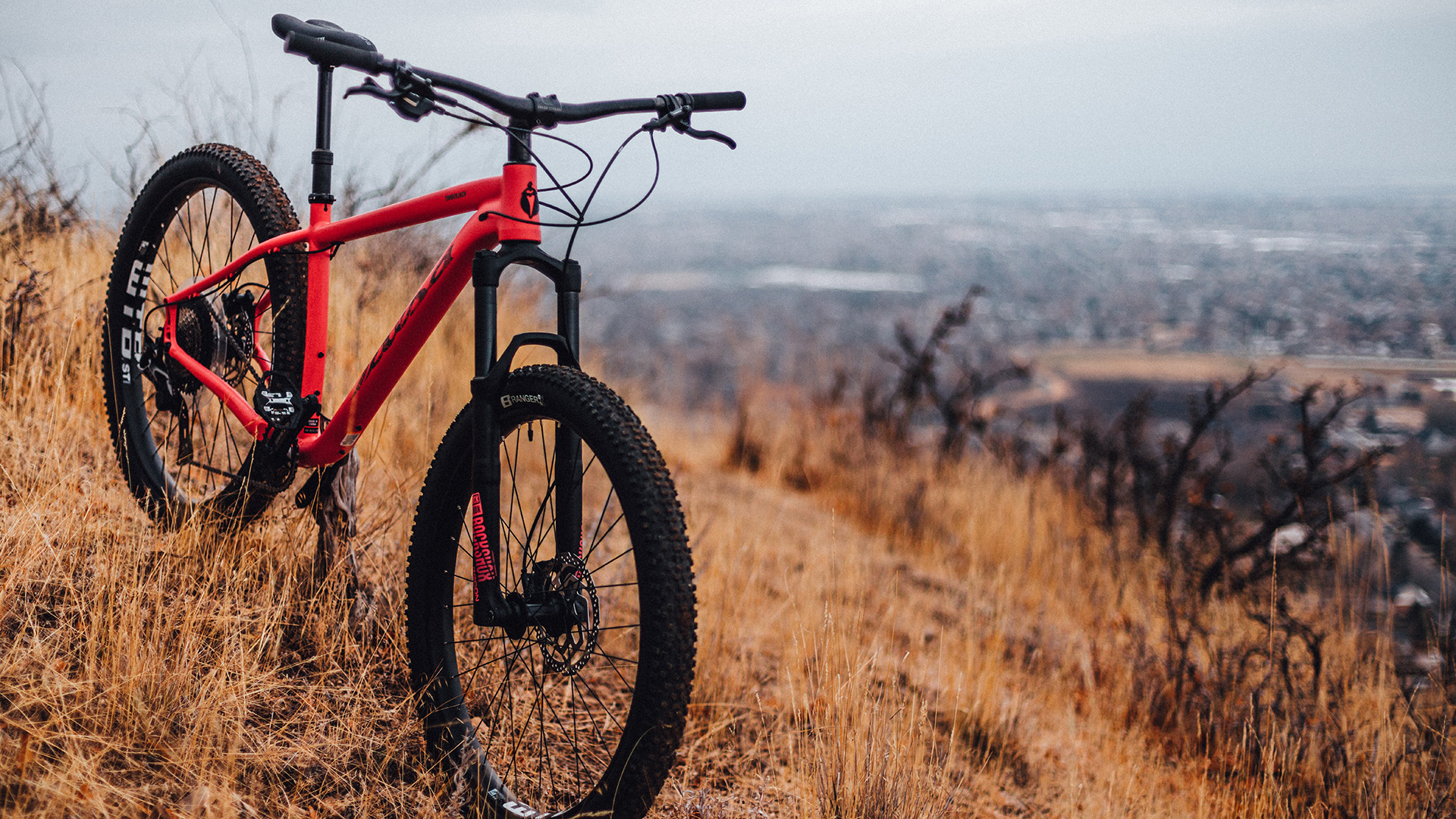
Hard tail mountain bike
Mountain bike vs road bike: tyres and wheels
Road bikes have narrow, smooth tyres, mountain bikes have wide, knobbly tyres. That said there's an almost infinite number of combinations of tyre widths and tread patterns for both road and mountain bikes depending on the terrain and the season (eg road bike tyres have a more grippy and potentially wider tread for wet winter conditions than they do for dry summer roads, and mountain bikes tyres have different tread patterns for muddy trails (wider and more knobbly) than they do for dry trails (narrower and less aggressive tread)).
Gravel bike tyres fit somewhere in between with less knobbly, narrower tyres than full-on mountain bikes but more rugged, wider tyres than a road bike.
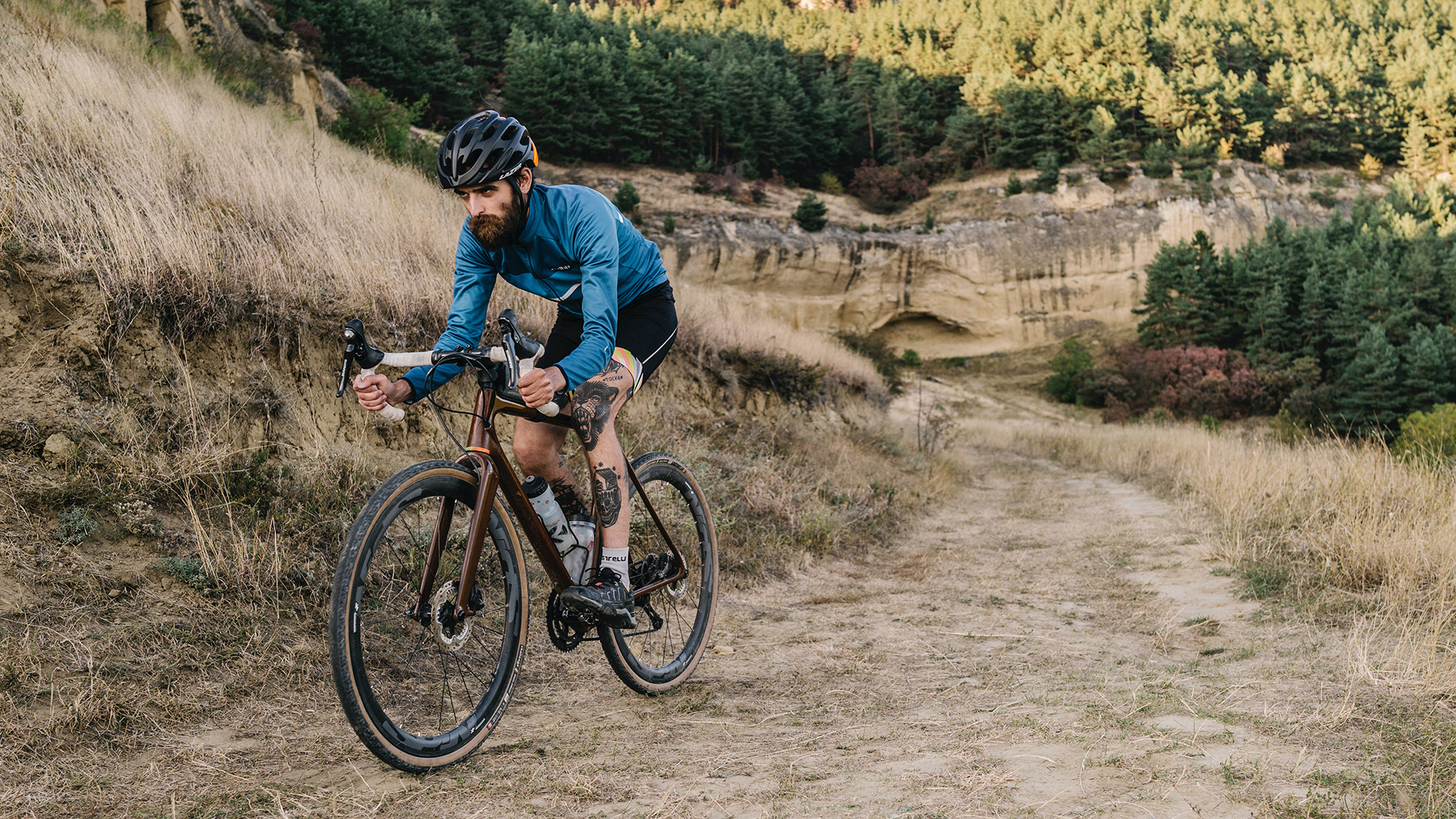
Gravel bike
Tubeless tyres are becoming increasingly popular on all types of bicycle; they don't have inner tubes but instead contain a sealant which automatically seals small punctures, whilst larger punctures can be quickly repaired on the go by the insertion of a repair 'plug'.
Road bikes have 28" (aka 700c) diameter wheels; mountain bikes may have 27.5" (or 650b) or 29" diameter wheels and gravel bikes can be either 28"/700c or 27.5"/650b. Confusing? Yes, a little, but essentially bigger diameter wheels roll more efficiently whilst smaller diameter wheels provide better handling.
The width of the tyre is also important – put simply, the wider it is the more it soaks up bumps but the less efficiently it rolls.
A good bike shop will guide you through all the above when choosing a bike, which until the advent of gravel bikes was relatively straightforward i.e. you ride a road bike on roads and a mountain bike everywhere else.
Gravel bikes can do a little of both but are not as good for pure road riding or full-on mountain biking, so your choice of bike should be dictated by whether you intend to specialise in tarmac, dirt or fancy a bit of both. Life is never simple, hey?
Alf Alderson is an adventure travel writer and outdoor gear reviewer who splits his time between the Pembrokeshire coast and the French Alps, where he is an 'ambassador' for the ski resort of Les Arcs.
-
 3 overrated shoulder exercises, according to a fitness expert (and what to do instead)
3 overrated shoulder exercises, according to a fitness expert (and what to do instead)Sculpt 3D shoulders whilst minimising injury with these three alternative exercises
By Bryony Firth-Bernard Published
-
 Polar’s new subscription feature lands in the shadow of Garmin’s Connect+ rollout
Polar’s new subscription feature lands in the shadow of Garmin’s Connect+ rolloutPR genius or timing disaster? Polar’s new Fitness Programme adds adaptive training to its ecosystem
By Matt Kollat Published
-
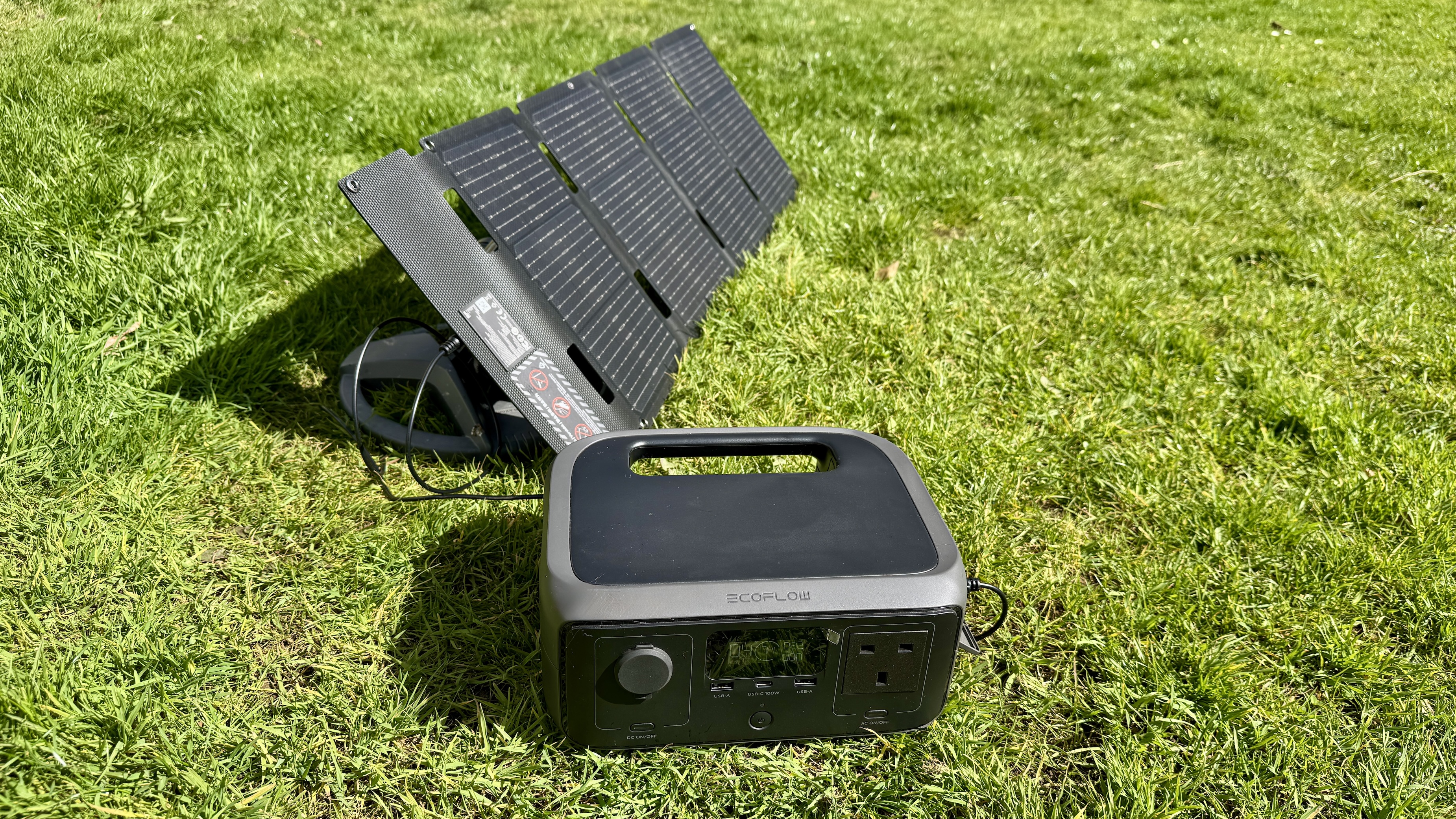 EcoFlow River 3 UPS review: Downsizing power without compromise
EcoFlow River 3 UPS review: Downsizing power without compromiseKeep the juice flowing with EcoFlow’s latest travel buddy
By Derek Adams Published
-
 The AeroPress Go Plus is the gadget I need for my next outdoor adventure
The AeroPress Go Plus is the gadget I need for my next outdoor adventureWhether you’re off camping or heading on a hike, the new AeroPress Go Plus lets you enjoy great coffee on the go
By Bryony Firth-Bernard Published
-
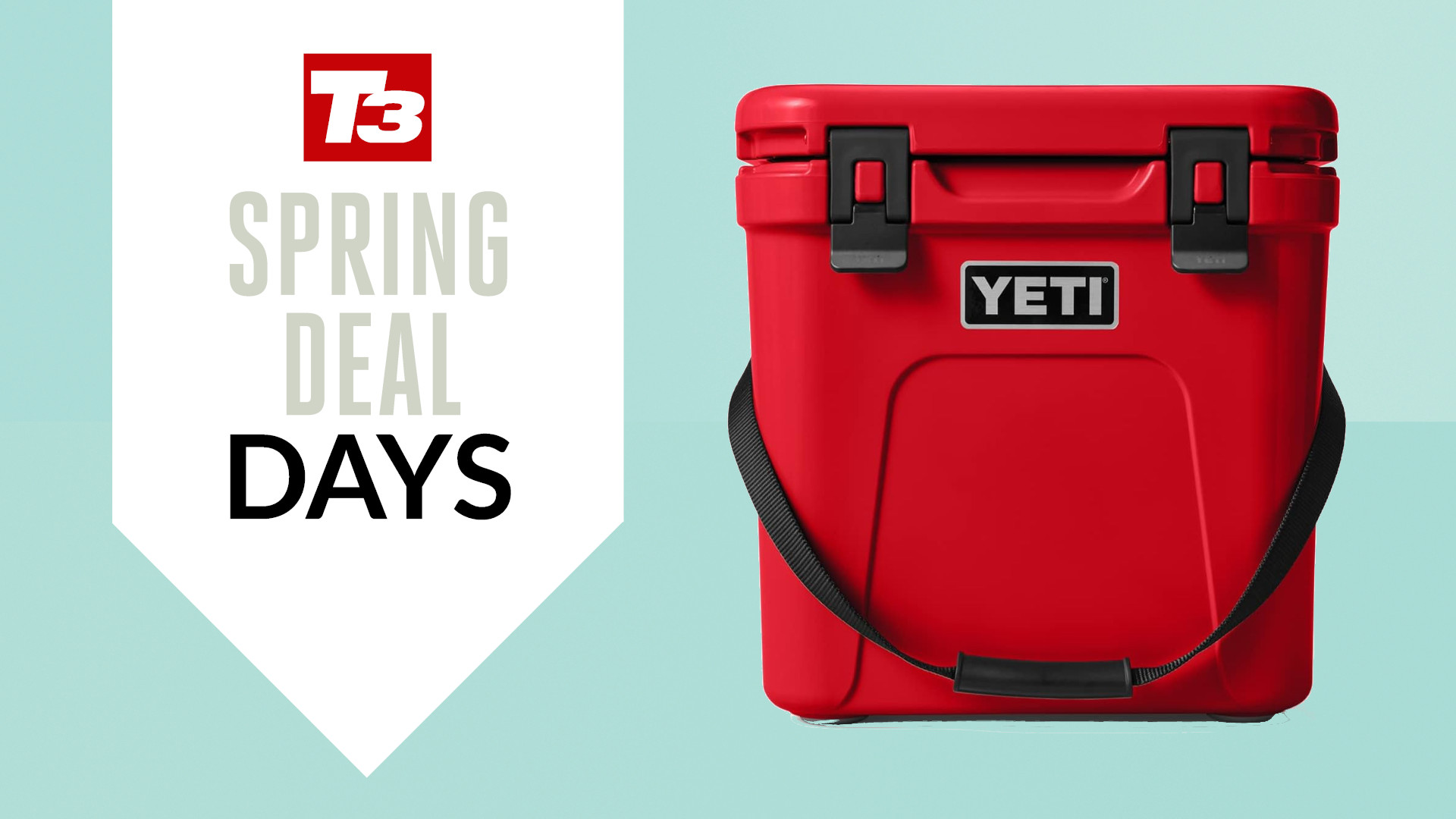 YETI has discounted a ton of its best-selling coolers and tumblers in Amazon’s Big Spring Sale
YETI has discounted a ton of its best-selling coolers and tumblers in Amazon’s Big Spring SaleJust in time for the warmer months
By Bryony Firth-Bernard Published
-
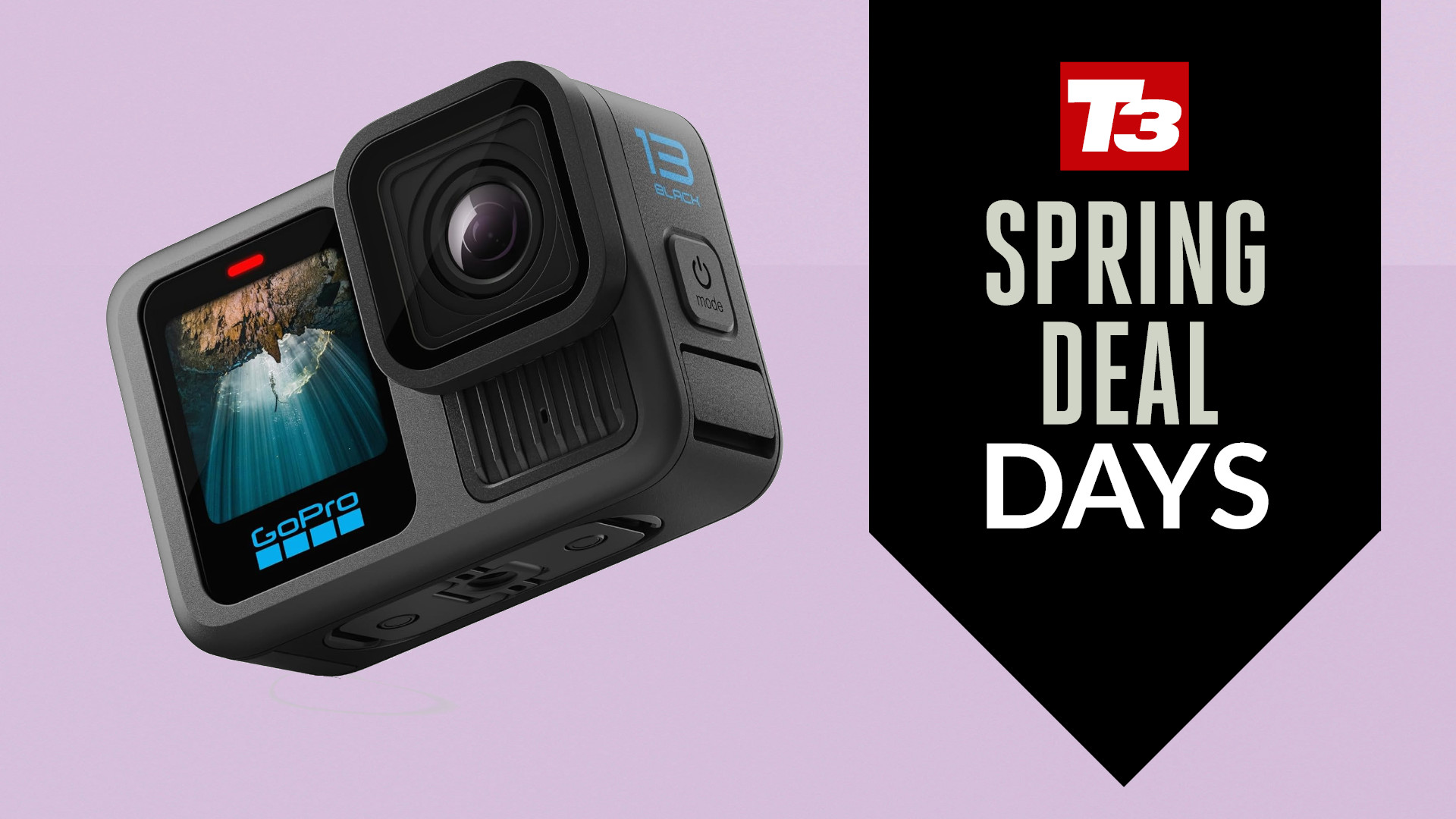 GoPro's latest flagship action cam just got a major price cut in Amazon's spring sale deal
GoPro's latest flagship action cam just got a major price cut in Amazon's spring sale dealYou can pick up the Hero 13 Black with almost 20% off
By Lee Bell Published
-
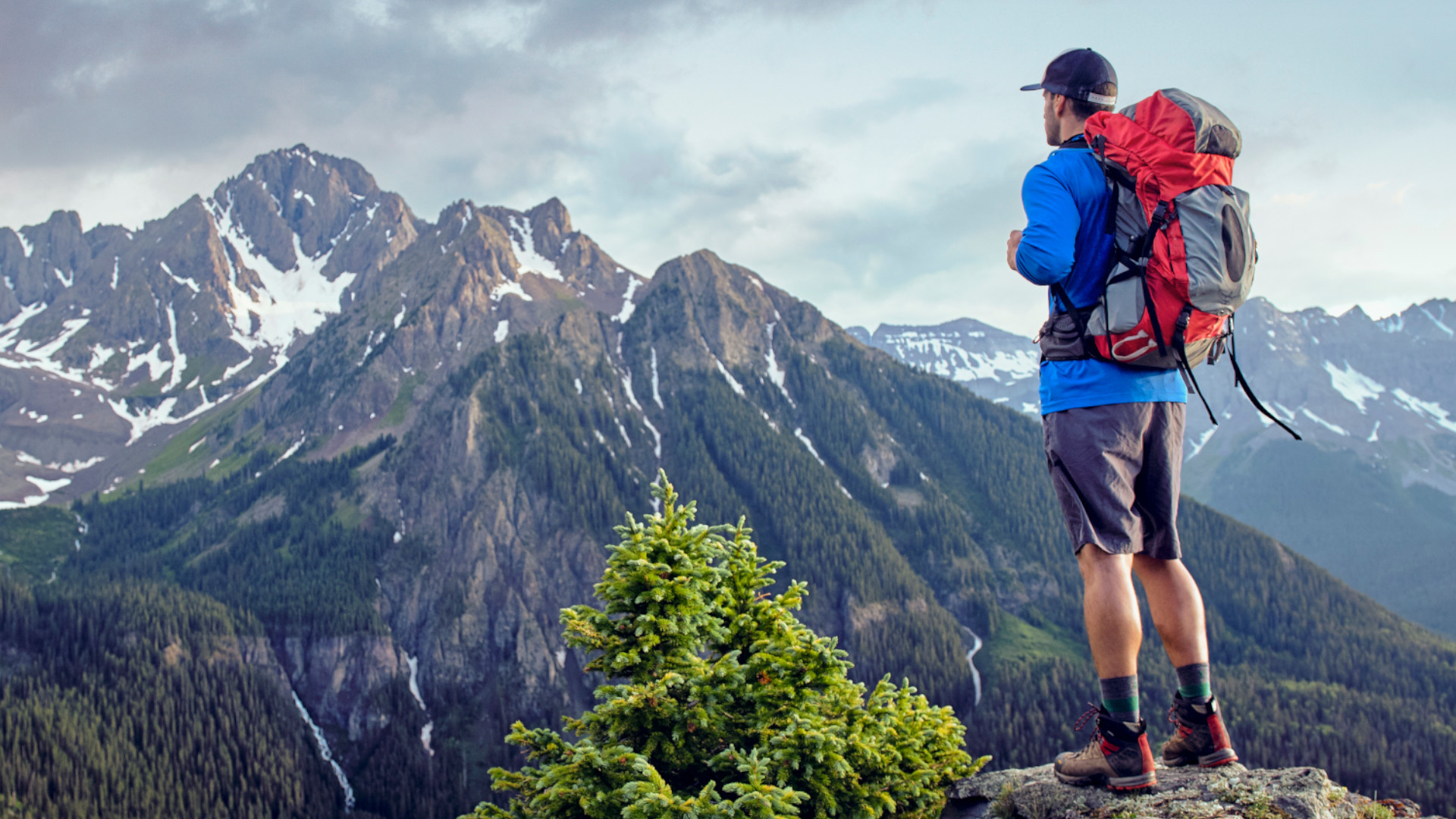 How to pack your rucksack for a hiking or camping trip
How to pack your rucksack for a hiking or camping tripPack properly, save space and get easier access to the items you need the most
By Bryony Firth-Bernard Published
-
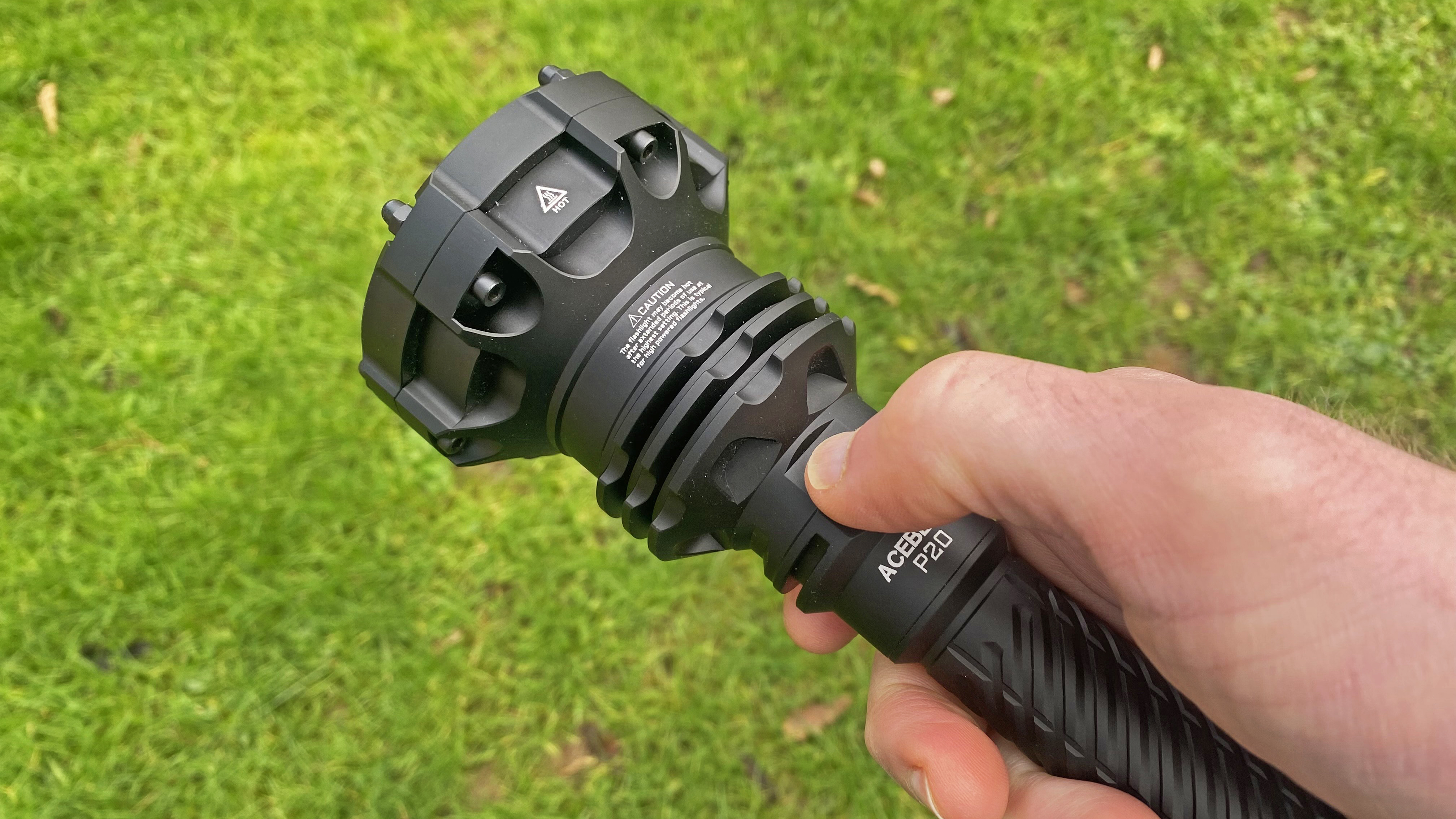 AceBeam P20 review: A skinny flashlight that packs a mighty punch
AceBeam P20 review: A skinny flashlight that packs a mighty punchFeel the force and slice the night with this light sabre, which has a range of over a kilometre
By Pat Kinsella Published
-
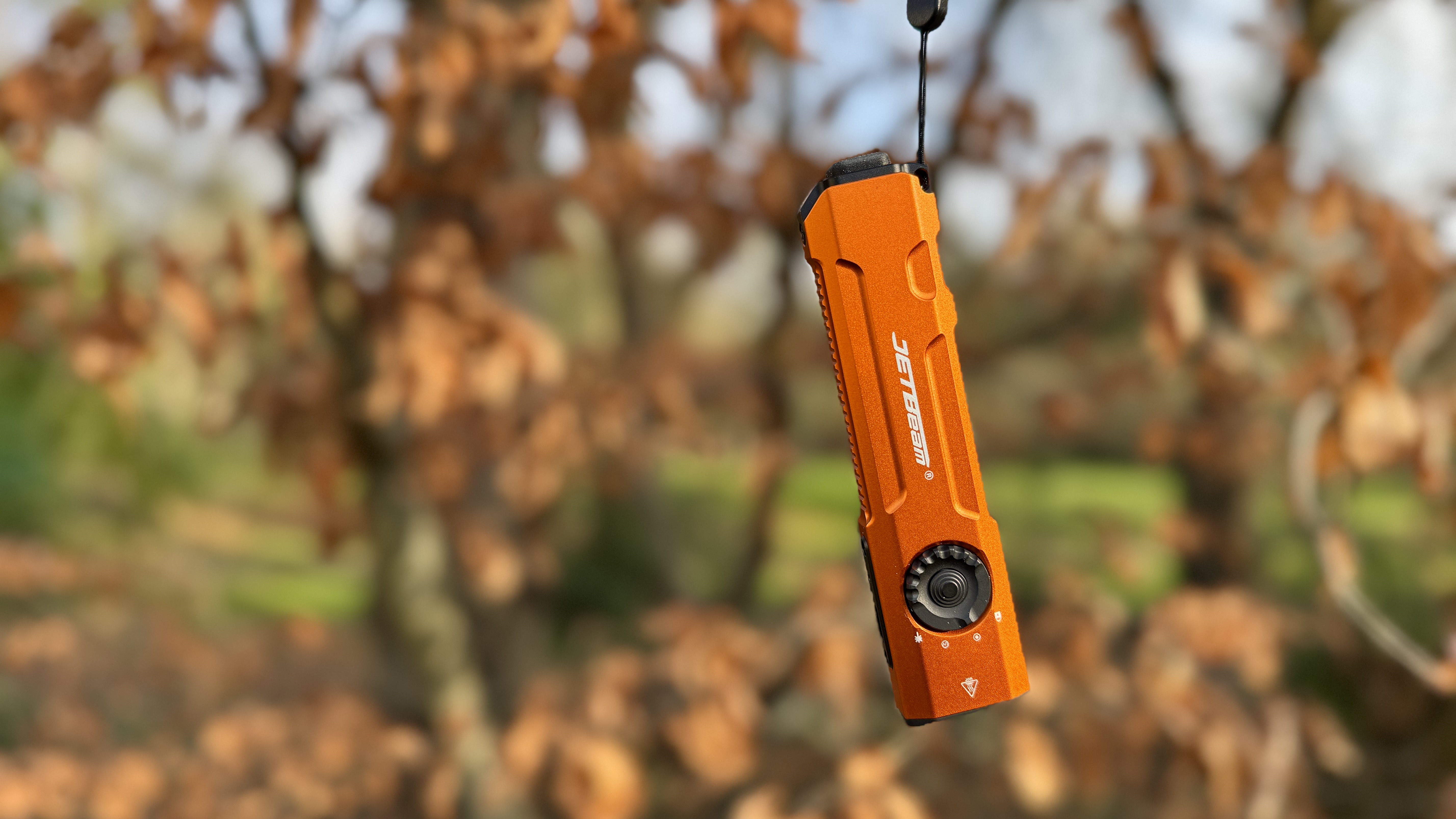 Jetbeam E26-UV Kunai pocket torch review: Let there be light. Loads of it
Jetbeam E26-UV Kunai pocket torch review: Let there be light. Loads of itBright, durable UV-enabled pocket torch for everyday excellence
By Derek Adams Published
-
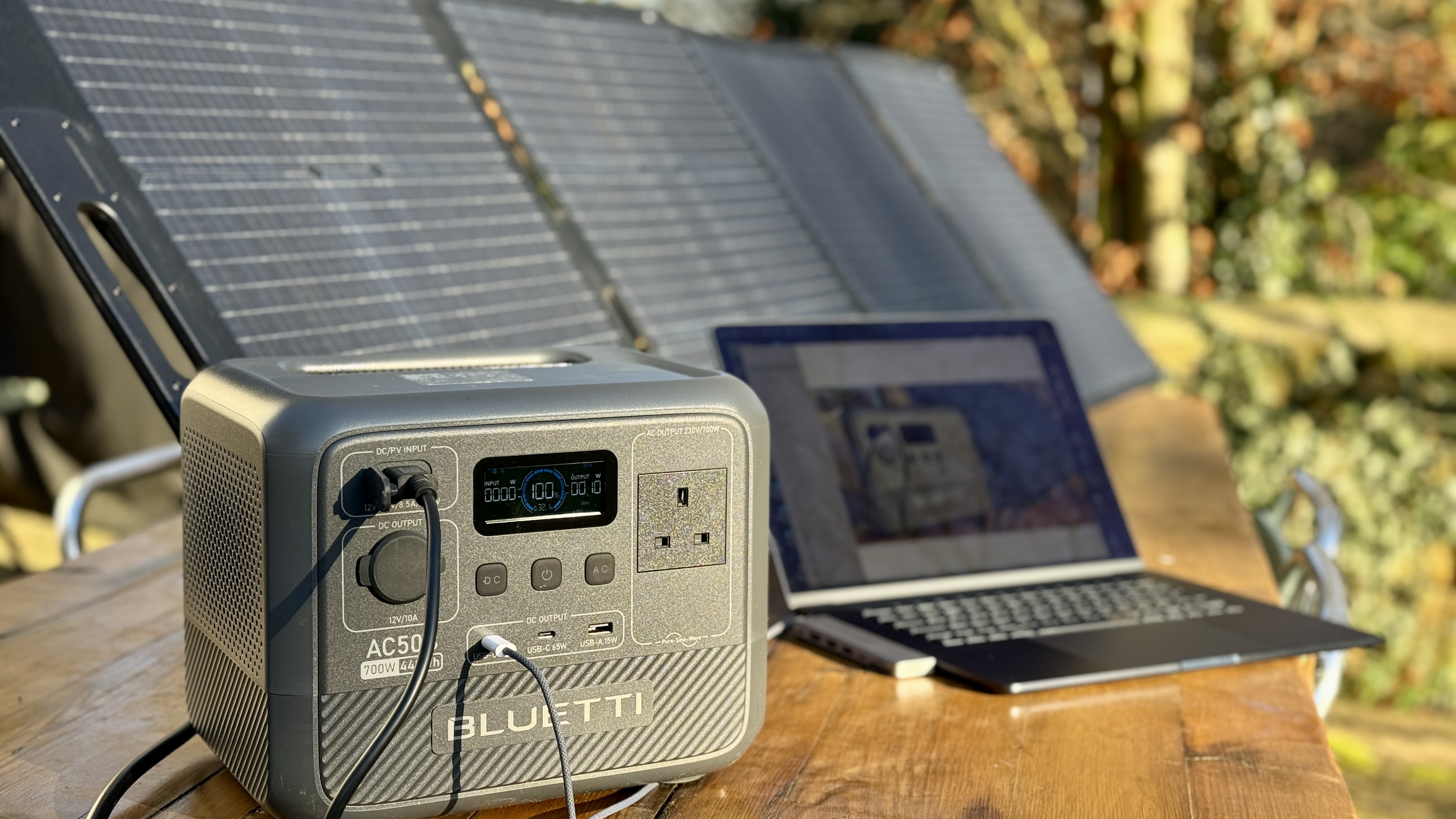 Bluetti AC50B review: a compact powerhouse for outdoor adventures and home emergency backup
Bluetti AC50B review: a compact powerhouse for outdoor adventures and home emergency backupKeenly-priced portable power for light day-to-day use
By Derek Adams Published